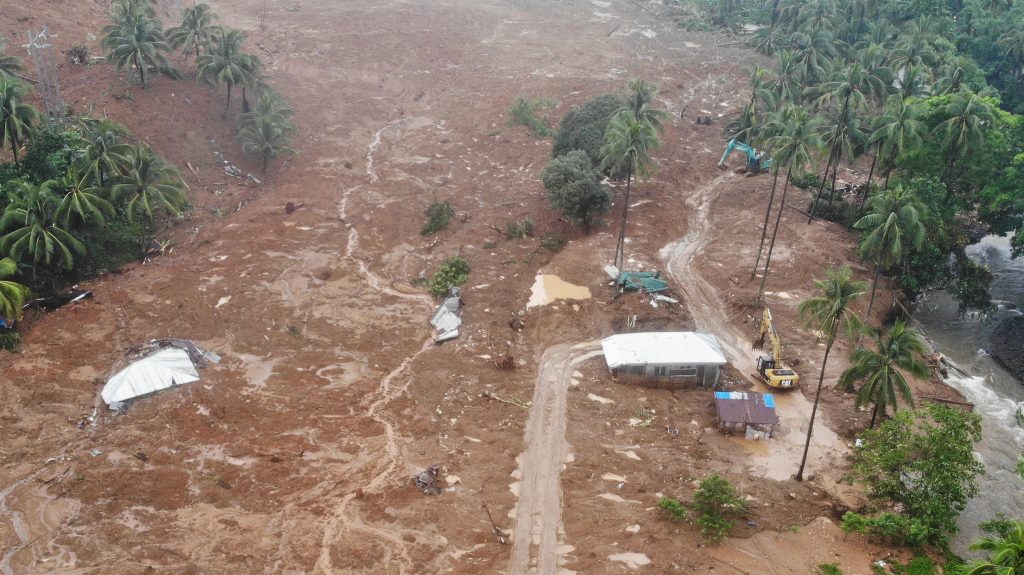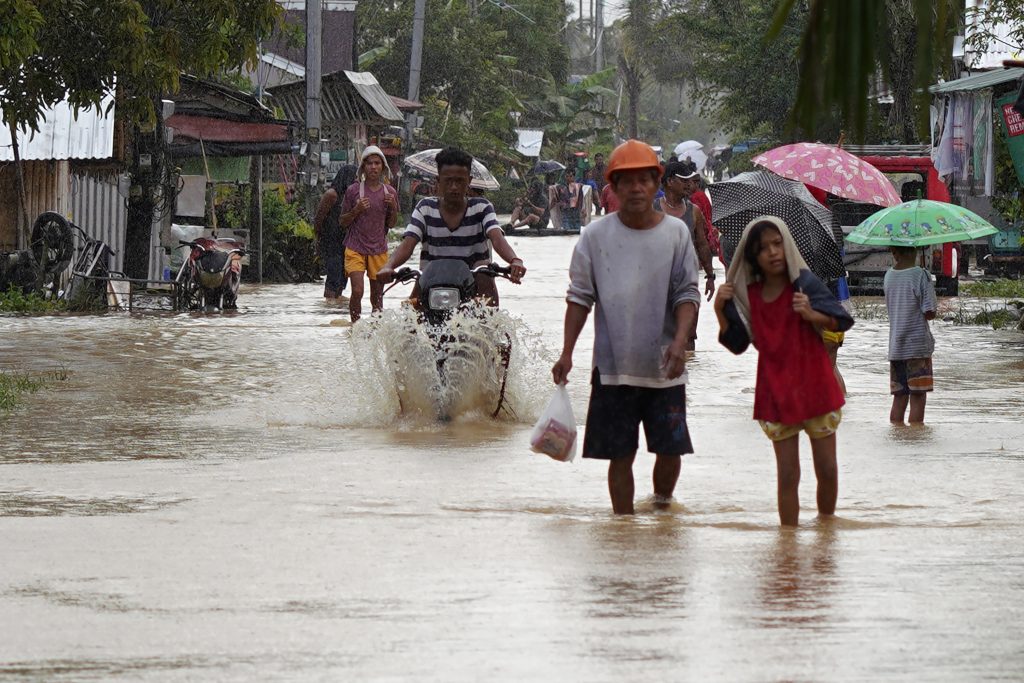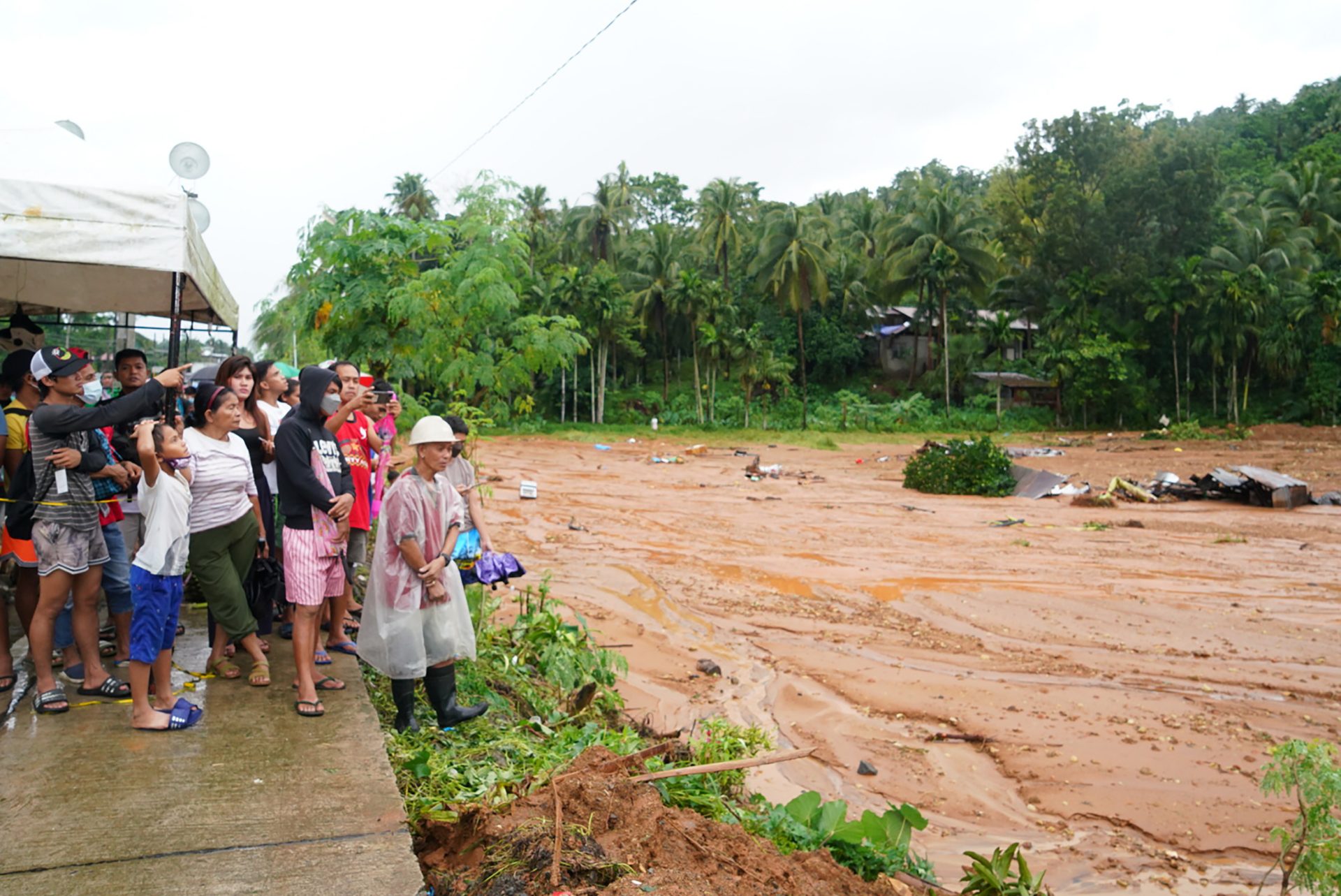The social action arm of the Catholic bishops of the Philippines has released an initial cash aid of about US$5,780 to help the Archdiocese of Capiz and the Diocese of Maasin in the central part of the country that were most affected by tropical storm Megi (local name: Agaton).
“We have released [about US$2,886] to the [Arch]diocese of Capiz yesterday, while the other half was released to the Diocese of Maasin in Leyte,” Father Antonio Labiao Jr., executive director of Caritas Philippines, told LiCAS News in a telephone call.
The priest said his office is still waiting for the initial assessment from the Archdiocese of Palo for the release of funds.
“Only the three dioceses have asked for help so far, but we’re expecting that we will have to shell out more money after further evaluation,” said Father Labiao.
He said he has yet to receive information on the state of churches in the affected areasz, but has heard that several towns were submerged in mud and floodwater.
“We hope to get a clearer picture of the situation by tomorrow,” said the priest, adding that it is “a challenge for our volunteers to do on-site operations because of the persistent rain and deep floods.”
“But we will deploy more of them as soon as we can,” he said.
Father Labiao appealed to the public to donate “in whatever way they can” to the typhoon victims in the spirit of “sacrifice and selflessness” especially during the Holy Week.
“It’s sad that it happened when we should be solemnly observing the most sacred week in the country, but this is also an opportunity for others to practice their ‘Alay Kapwa,’” said the priest.
“Alay Kapwa” is a Lenten evangelization and resource mobilization program of the Philippine Catholic Church to fund its social action programs on disaster management, peace, and ecology, among others.

Death toll rises
The death toll from the landslides and floods rose to 58 on Wednesday, official tallies showed, as rescuers dug up more bodies with their bare hands in villages crushed by rain-induced avalanches.
Most of the deaths from the tropical storm — the strongest to hit the disaster-prone archipelago this year — were in the central province of Leyte, where a series of landslides devastated communities.
At least 47 people died and 27 were missing after waves of sodden soil smashed into farming settlements around Baybay City over the weekend, local authorities said.
More than 100 people were injured. Authorities said more than 500,000 individuals were affected across nine regions, with 42,352 evacuated to safer grounds.
Aerial photos showed a wide stretch of mud that had swept down a hill of coconut trees and engulfed Bunga village, where only a few rooftops poked through the now-transformed landscape.
Three people were also killed in the central province of Negros Oriental and three on the main southern island of Mindanao, according to the national disaster agency.
Search operations for survivors in Pilar village — part of Abuyog municipality in Leyte — resumed at first light on Wednesday, with boats carrying rescuers to the coastal community of around 400 people.
The operation came a day after a landslide pushed many houses in the village into the sea.
“We have five casualties, one unidentified,” Captain James Mark Ruiz of Abuyog police told AFP.
Ruiz said more boats were needed to rescue victims and retrieve bodies in the ongoing search after landslides cut off road access to the community.
Around 50 survivors have been ferried from the village, the Bureau of Fire Protection said on Facebook on Tuesday.
Photos posted by the agency showed buildings crushed or turned over by the force of the landslide and debris in the water.
Medical workers rushed to treat victims as they were brought to shore, applying bandages to cuts and providing emergency blankets. One woman had her right arm in a splint.
Raymark Lasco, a radio operator at the Abuyog disaster agency, told AFP that “many people” had died and that rescue operations were ongoing.

Port operations suspended
Search operations also resumed around Baybay City after the rain stopped, enabling emergency personnel to access hard-hit areas, Mayor Jose Carlos Cari told CNN Philippines.
“In some barangays (villages), we’re just doing retrieval,” Cari said.
Rescuers have been using their bare hands and shovels to reach victims buried by the landslides.
A Philippine Coast Guard video shared on Facebook on Tuesday showed rescuers carrying a mud-caked woman on a stretcher from one of the devastated villages, while other victims were piggybacked to safety.
The military has joined coast guard, police and fire protection personnel in the search and rescue efforts, which have been hampered by bad weather.
Whipping up seas, Megi forced dozens of ports to suspend operations and stranded thousands of people at the start of Holy Week, one of the busiest travel periods of the year in the Philippines.
State weather bureau Pagasa reported that as of 10 a.m. on Wednesday, Megi has already dissipated into a Low Pressure Area, although scattered rainshowers will prevail over the provinces of Quezon, Bicol Region, Oriental Mindoro, Marinduque, Romblon, and Visayas.
Pagasa warned that swells from typhoon Malakas (local name: Basyang) will bring rough seas over the northern and eastern seaboards of Luzon and the eastern seaboards of Visayas and Mindanao.
Megi came four months after super typhoon Rai devastated swathes of the country, killing more than 400 and leaving hundreds of thousands homeless.
Scientists have long warned that typhoons are strengthening more rapidly as the planet becomes warmer due to climate change.
The Philippines — ranked among the most vulnerable nations to its impacts — is hit by an average of 20 storms every year. – with a report from AFP







